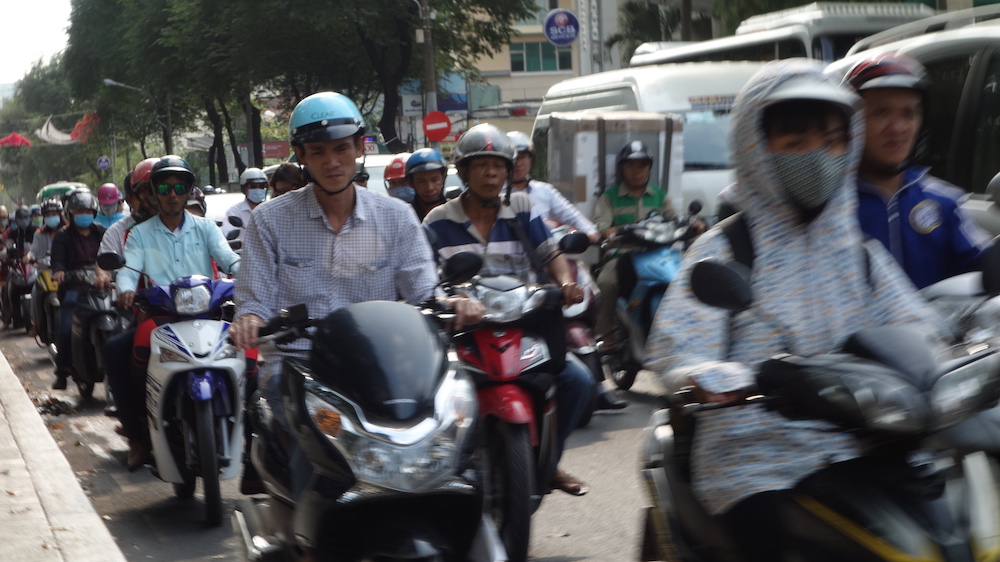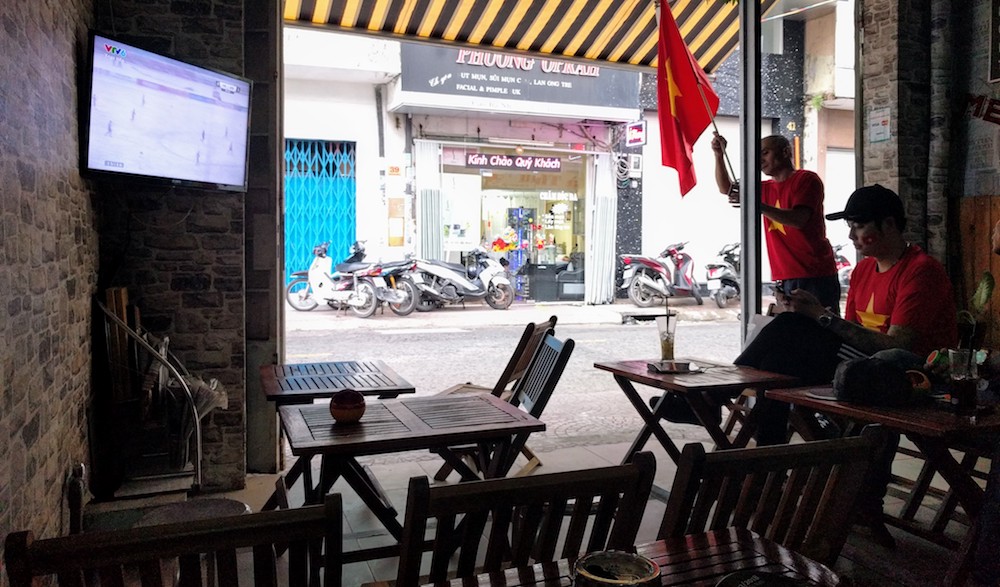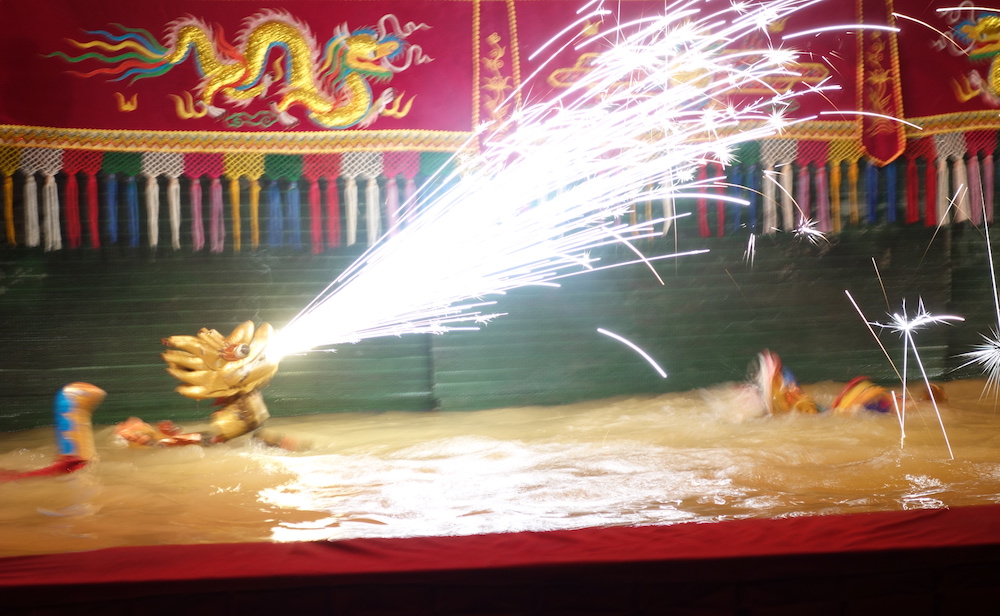Ho Chi Minh City
Leaving Bangkok
After Prachuap we had a short stay in east Bangkok before getting to Ho Chi Minh City. Our last day in Bangkok was the most difficult we’ve had so far. Our flight was in the late afternoon and that same morning I realized that I would need a visa to enter Vietnam (Kanako and Asa with Japanese passports are exempt since we were staying less than 2 weeks). So I had to get an expedited online visa, a couple hours later rush off to the shopping mall to find a place to print it. Then rush back, grab a taxi for the airport in the pouring rain and get stuck in Bangkok traffic on the way. Finally get to check-in counter, through immigration, security and run run run to the gate at the far end of the terminal with 30 minutes to departure only to get there out of breath and wait because the plane was delayed by an hour. Then we got to immigration in Ho Chi Minh City to realize that I forgot the passport photo for the visa was in our checked-in luggage so I had to pay an additional fee. All told, I think what should have cost $25 for the visa, turned into $125.
But we made it.
A city of motorbikes
Actually as the plane descended to the airport I could see them from the window. There just seem to be so many more motorbikes than Bangkok or anywhere else we had been. Then later in the Uber from the airport to the guesthouse it was clear just how many there were. But not until the next morning when we took to the streets for a walk around was the madness of it starting to dawn on us.
In a city of 9 million people it’s surprising how few traffic lights we saw, and even where there were traffic lights these were treated as suggestions, often ignored. Drivers always start before the light changes green and keep driving after it turns red. This transition time is managed as it is in all the other intersections without traffic lights: with a chaos driven and tempered only by the instinct of survival. In Bangkok it’s very rare to hear honking horns even in bumper-to-bumper traffic, but in Vietnam honking is constant, and the bigger the vehicle (trucks and buses) the louder and more frequent is the honking.
You can also see it on how people dress. Though the weather was upper 80’s and humidity was the same, those on motorbikes were often completely covered, mostly to keep the dust off. Women wore slippers and short stockings; to cover pants or skirt they wore a long over-skirt that’s open in the back like an apron; a light sweatshirt with a hood; detached sleeves, light gloves, face mask to cover nose and mouth, or if you don’t have a hooded sweatshirt wear a full head covering with a small slit for eyes.
 Motorbikes
Motorbikes
The city has accommodated itself to the reality of motorbikes. Every sidewalk curb has a graduated incline so motorbikes can hop up and park on the sidewalks. So pedestrians don’t really own the sidewalk, because half the time you have to walk in the street around park bikes. In places and times when the traffic really backs up motorbikes will simply take to speeding on the sidewalks.
Crossing big roads with no traffic lights is something you see locals do with relative ease, but for the unaccustomed seems impossible, suicidal or at least insane. I am a New Yorker, I was jaycrawling before I could walk so I had some confidence. One day I was walking solo to a coworking spot 15 mins from our guesthouse and had to cross a six-lane road packed with 95% motorbikes whizzing by. I almost died twice. So the technique is just to wait for the right moment and go for it, stop or move forward, never go backwards. Or you can just wait until someone else is crossing and walk downstream of them.
I didn’t take a lot of photos in the city because I was mostly focused on trying to keep us all alive.
A country of coffeeshops
I don’t know why there are so many, but the coffeeshops are everywhere in Vietnam. From fancy ones to national franchises to just small simple coffeeshops. There are tons of these small simple ones, and they have two basic arrangements: short wooden stool chairs (maybe 10-12 inches high) set around low rectangular tables; OR semi-reclined plastic chairs facing the street with small tables between them — I guess the idea is that it’s more interesting to sip your coffee and face the street than face the same friend(s) you go to this place with every time.
As a remote worker, I am always on the lookout for coffeeshops, and there are basically three main requirements — in order of importance: 1) comfortable chair and table (a comfortable chair without a table is great but not for working); 2) wifi — reliable connection is more important than speed; 3) coffee or tea.
February 9th was the 2018 AFC U23 final match (Asian men’s soccer under-23), and Vietnam was facing Uzbekistan. Everyone was watching the late afternoon game being played in snowy Beijing. We looked around the neighborhood and finally found a place with a tv and space to sit and join in the oohs and aahs of the game. Vietnam lost just towards the end. One customer at the coffeeshop was so angry he broke a table before storming out — it captured the mood of the room, and probably of the country. Must have been quite a win for Uzbeks though.
 Watching the soccer match
Watching the soccer match
Water Puppets
Vietnamese water puppetry actually is from the Hanoi region, where it originated in the in the wet marshy villages of the Red River delta. But seeing it in Ho Chi Minh City at a very touristy theater was surprisingly fun and entertaining.
 Some pyrotechnics at the water puppet show
Some pyrotechnics at the water puppet show
Hidden behind a curtain, puppeteers stand in waist-high water manipulating different kinds of puppets to make their characters dance, swim, fish etc. It’s a very different experience than other puppet shows, because the emphasis is on technical showmanship — the craft that goes into making the puppets for clever underwater manipulation is more important than the realism of the gestures and movements. But like any other puppet show the characters are accompanied by live musicians that also give voice to the characters.